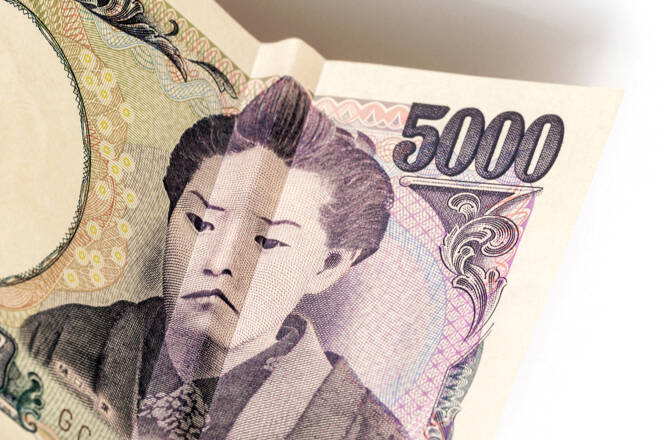Advertisement
Advertisement
Japanese Yen Forecast: Fed and BoJ Policies Set to Influence USD/JPY Price Action
By:
Key Points:
- Japan's widening trade deficit and soft wage growth could delay a Q4 BoJ rate hike, impacting USD/JPY trends.
- The Fed's upcoming rate decision may overshadow BoJ policies, driving volatility in USD/JPY movements.
- Strong US Fed actions, including a 25-basis point hike, could push USD/JPY higher toward the 145 level.
Will Japan’s Trade Deficit Delay Rate Hikes?
On Wednesday, September 18, trade data and machinery orders from Japan will likely influence buyer demand for the USD/JPY pair.
Economists expect Japan’s trade deficit will widen from ¥621.8 billion in July to ¥1,380.0 billion in August.
A growing trade deficit might reduce expectations of a Bank of Japan rate hike later this year. With a trade-to-GDP ratio of around 47%, deteriorating trade terms could affect the economy, especially the labor market and wage growth. Downward trends in wage growth may dampen demand-driven inflation, easing pressure on the BoJ to hike rates.
In addition to the trade data, machinery orders are another leading indicator of demand. Economists predict machinery orders will increase by 0.5% in July, following a 2.1% rise in June. Disappointing numbers could further soften bets on a Q4 2024 BoJ rate hike.
Weaker-than-expected figures could push the USD/JPY toward 143.5. Conversely, better-than-expected data could raise bets on a Q4 2024 BoJ rate hike and drag the USD/JPY below 140.
Bank of Japan Policy Guidance and Expert Views
On Thursday, September 12, Bank of Japan Board Member Tamura rounded off a series of Board Member speeches, stating that the future rate path will depend on inflation and the economy.
However, Unlimited Funds Chief Investment Officer Bob Elliot offered his view on the Bank of Japan’s policy goals, stating,
“Japan doesn’t have an inflation problem. There is still little urgency for the BoJ to do much based on macro conditions regardless of rhetoric, making the Fed the main driver of JPY for the foreseeable future, not the BoJ.”
Upbeat trade data and a surge in machinery orders could test the theory of the Fed being in the policy driving seat.
US Federal Reserve: 25 or 50 Basis Points? FOMC Projections and Powell Press Conference
Beyond Japan’s data, the Fed interest rate decision, FOMC projections, and Powell’s press conference could prove crucial.
A 50-basis point Fed rate cut, downward revisions to growth, and a more dovish Fed rate path could send the USD/JPY below 140. Conversely, a 25-basis point rate hike and expectations of a soft landing could push the USD/JPY toward 145.
Other stats include housing sector-related data. However, these will play second fiddle to the Fed.
Short-term Forecast for USD/JPY
USD/JPY trends will likely hinge on the Fed interest rate decision and FOMC projections as the BoJ interest rate decision looms. The USD/JPY could face heightened volatility, with the Fed likely to address unanswered questions about the rate path and the economic outlook.
Investors should remain alert with the BoJ’s interest rate decision also pivotal for the USD/JPY pair. Monitor real-time data, central bank views, and expert commentary to adjust your trading strategies accordingly. Stay ahead of the market with our expert insights.
USD/JPY Technical Analysis
Daily Chart
The USD/JPY hovers well below the 50-day and 200-day EMAs, confirming bearish price trends.
A USD/JPY breakout from the 142.500 level may bring the 143.495 resistance level into play. Furthermore, a break above the 143.495 resistance level could give the bulls a run at the 145.891 resistance level.
Economic indicators from Japan, the Fed interest rate decision, the FOMC projections, and the FOMC press conference require consideration.
Conversely, a break below the 141.032 support level could signal a drop to the September 16 low of 139.576. A fall through 139.576 could bring the 137.712 support level into play.
The 14-day RSI at 38.58 suggests a USD/JPY fall below the 141.032 support level before entering oversold territory.
About the Author
Bob Masonauthor
With over 28 years of experience in the financial industry, Bob has worked with various global rating agencies and multinational banks. Currently he is covering currencies, commodities, alternative asset classes and global equities, focusing mostly on European and Asian markets.
Did you find this article useful?
Latest news and analysis
Advertisement
